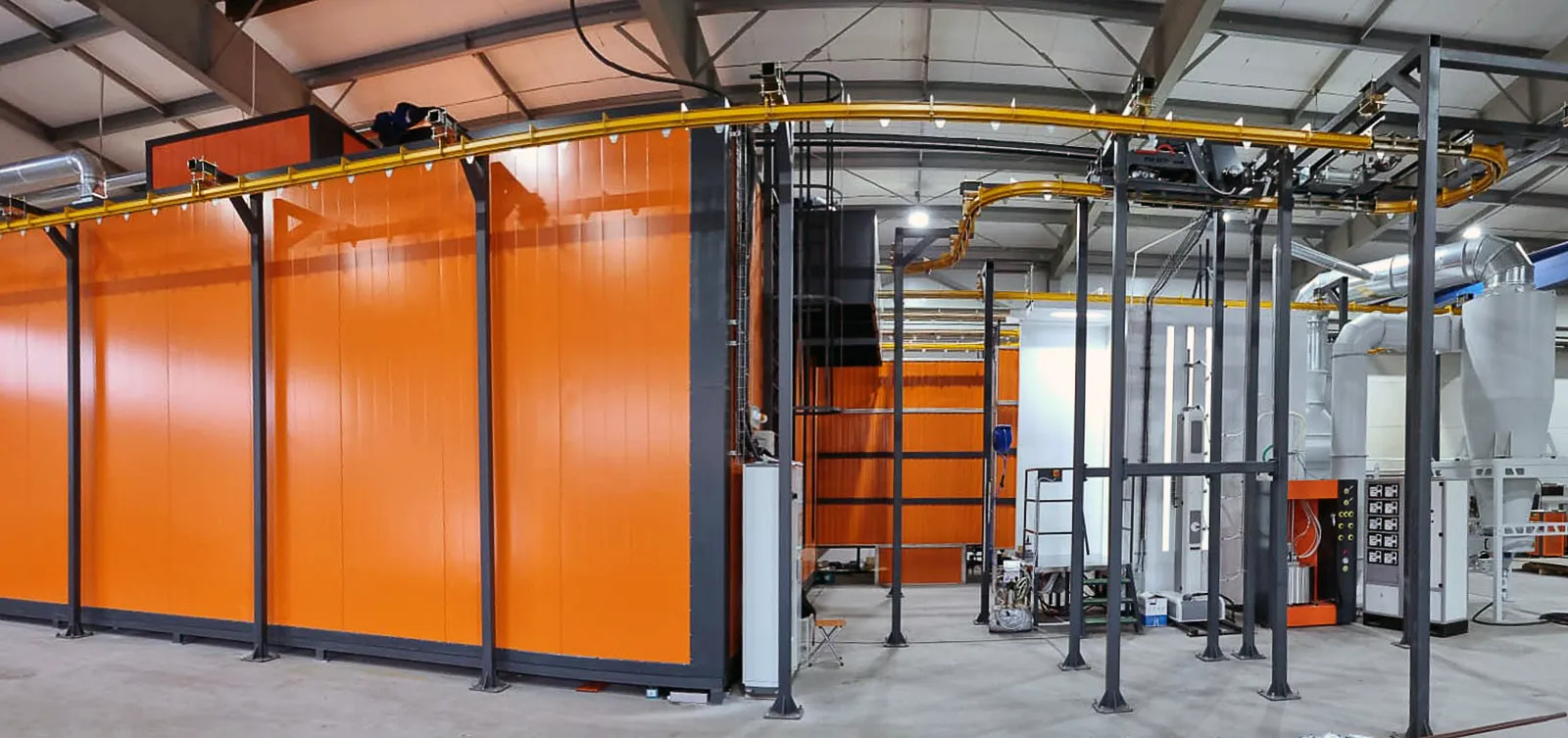When it comes to industrial surface treatment, Powder Coating Ovens play a key role in delivering a durable, high-performance finish. Whether you’re running a small batch line or a high-volume automated operation, choosing the right type of oven and energy source can make or break your process.
There are different types of Powder Coating Ovens available, each suited for specific workflows and production demands. In this article, we’ll take a closer look at two major variants — Box Ovens and Tunnel Ovens, both offered by AABO-IDEAL — and compare their benefits, limitations, and best-use scenarios. We’ll also explore available energy sources to help you make an informed decision.
Why Powder Coating Ovens Matter
Powder coating is not just about spraying powder and calling it a day. The curing stage is absolutely crucial. That’s where Powder Coating Ovens come in — they heat the coated part to the proper temperature for a set period of time, causing the powder to melt, flow, and chemically react, forming a strong, even finish.
Without a reliable curing oven, you risk issues like poor adhesion, uneven coating, or even premature product failure.
Key advantages of Powder Coating Ovens:
- Consistent curing quality across parts
- Energy efficiency with modern insulation and controls
- Custom sizes and configurations to suit different industries
- Adaptability to different fuel types
- Reduced maintenance with robust construction
More detailed info about curing equipment can also be found on Spectral’s drying and curing ovens page.
Types of Powder Coating Ovens
Let’s dig into two of the most popular oven configurations from AABO-IDEAL: Box ovens and Tunnel ovens.
Box Ovens: Flexibility and Control
Box Ovens from AABO-IDEAL are ideal for small to medium-scale operations where batch processing is common. They’re typically stand-alone units and are extremely versatile.
Highlights:
- Manual or semi-automatic loading
- Ideal for custom or low-volume jobs
- Tight temperature control
- Available in multiple energy variants
- Compact footprint, easy integration
Because of their simplicity, Box ovens are often used in job shops or for powder coating oversized parts that require manual handling.
Tunnel Ovens: Speed and Throughput
On the other hand, Tunnel Ovens from AABO-IDEAL are built for continuous, high-volume production lines. These ovens are integrated into automated conveyor systems, making them a perfect match for large-scale manufacturers.
Advantages:
- Non-stop operation for maximum productivity
- Even temperature distribution
- Optimized airflow and zoning
- Custom length and width options
- Seamless integration into robotic or conveyor-based lines
Tunnel ovens are typically found in automotive, appliance, or architectural industries—basically anywhere that demands consistency at scale.
Box vs Tunnel: Which Powder Coating Oven Is Right for You?
Choosing between a Box oven and a Tunnel oven comes down to your production goals, budget, and space.
| Feature | Box Oven | Tunnel Oven |
|---|---|---|
| Best for | Batch jobs, custom parts | High-volume, automated production |
| Loading method | Manual or semi-automatic | Fully automated conveyor |
| Energy efficiency | High (with good insulation) | Very high (due to process flow) |
| Footprint | Smaller | Larger, line-integrated |
| Flexibility | Very flexible | Fixed process layout |
In short:
- Go with a Box oven if you handle different part sizes, do batch work, or want lower upfront costs.
- Choose a Tunnel oven if you’re pushing for productivity and have an automated setup.
Energy Sources for Powder Coating Ovens
Another key consideration is how you’ll power the oven. Different facilities have access to different resources, and each fuel type has its own pros and cons.
Common energy options:
- Electricity:
Great for small ovens and locations without gas supply. Clean and precise but can be expensive in some regions. - Natural Gas:
Cost-effective and widely available. Excellent choice for large ovens or high-volume production. - Liquefied Gas (LPG):
Offers flexibility for remote or off-grid locations. Slightly more costly but easy to store. - Diesel:
Useful for mobile units or locations without infrastructure. Less common in modern setups due to emissions.
Choosing the right energy source isn’t just about cost—it’s about infrastructure, sustainability goals, and long-term maintenance too.
Summary: What to Consider When Choosing Powder Coating Ovens
Here’s a quick checklist to help guide your selection process:
- Type of production (batch vs continuous)
- Space availability and layout
- Energy source availability
- Budget for upfront cost and long-term operations
- Integration with existing equipment
For full oven options and technical specs, check out AABO-IDEAL’s full drying and curing ovens page.
And don’t forget to look into the flexible offerings available through Spectral’s drying and curing equipment as well — they have solutions to fit both small shops and large manufacturers.
Conclusion: Let Spectral Help You Find the Perfect Powder Coating Oven
Whether you’re just setting up your powder coating line or scaling up production, the choice of Powder Coating Oven is a critical factor in your success. With options like Box ovens and Tunnel ovens from trusted manufacturers like AABO-IDEAL, there’s a solution for every need and budget.
Looking for guidance or a custom setup? Spectral offers a full range of drying and curing ovens to suit your workflow, space, and energy preferences. Visit our site and let’s find the right oven for you.
